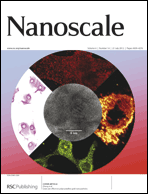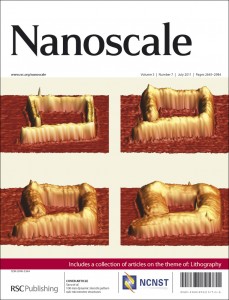
The microengines, 8 µm long, were prepared by a template-based electrodeposition of multilayer polymer/ Pt/ Ni microtubes. The outermost polymer layer (PEDOT: PEDOT-COOH) facilitates the immobilization of the antibodies for biomolecular recognition, the innermost Pt layer catalyses the breakdown of the hydrogen peroxide fuel, thereby releasing oxygen bubbles that propel the microengines through the microfluidic chip. Finally, the intermediate Ni layer is used to guide the microengines through the chip via magnetic guidance.
The authors demonstrated that the microengines could be used for the direct, real-time visualisation of antibody-protein binding events on the surface of Staphylococcus aureus bacterial cells. The autonomous transport of antibody-functionalized microengines in a lab-on-a-chip (LOC) format allows the user to avoid laborious and time-consuming washing steps associated with conventional immunoassay protocols. The authors envisage that the LOC self-propelling microengines could be potential tools for medical diagnostics and food safety analysis.
By Dr Lee Barrett
Read this HOT Nanoscale article today:
Micromotor-based lab-on-chip immunoassays
Miguel García, Jahir Orozco, Maria Guix, Wei Gao, Sirilak Sattayasamitsathit, Alberto Escarpa, Arben Merkoçi and Joseph Wang
DOI: 10.1039/C2NR32400H
This article is part of the Nanoscale themed collection on Self-propelled nano and microsystems Guest Edited by Martin Pumera and Samuel Sanchez. Check out the rest of the articles in this exciting collection.



















 Scientists in the US have tried to answer the question of whether biominerals are mesocrystals or not.
Scientists in the US have tried to answer the question of whether biominerals are mesocrystals or not.